Buckle up, railroad thrill-seekers! In 2025, rail speed isn’t just a number; it’s a global pursuit. From China's record-shattering CR450 to Japan’s futuristic maglev marvels, these trains define what high-speed travel means. Here’s your in‑depth, adrenaline-fueled tour of the Top 10 fastest trains, each revealed with rich detail and verified accuracy.
10. Frecciarossa 1000 (Italy)
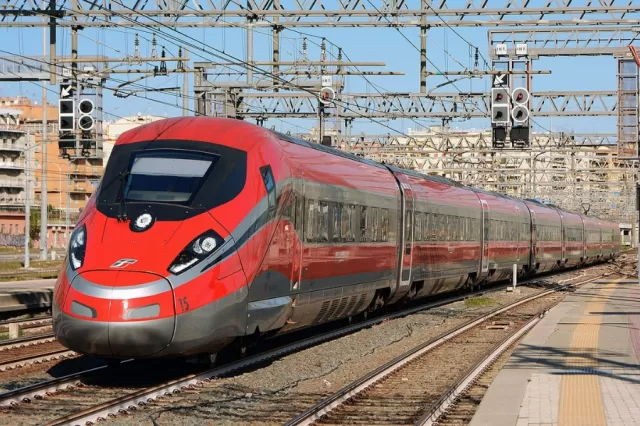
Speed Snapshot
Commercial Speed: 300 km/h (186 mph)
Test Speed: 389 km/h
Overview
Italy's Frecciarossa 1000, also known as ETR 1000, is the nation’s premier high-speed train running between Milan, Rome, Naples, and Florence. Built by Hitachi Rail Italy and Bombardier, it is one of Europe’s quietest and most sustainable trains.
Engineering Excellence
The train’s design focuses on speed, silence, and safety. It features 100 per cent active suspension, automatic train operation systems, and aerodynamic noses on both ends for bidirectional travel.
Interior Luxury
Frecciarossa 1000 offers four classes: Executive, Business, Premium, and Standard. Executive cabins include leather armchairs, gourmet meal services, and private meeting rooms.
Environmental Impact
It boasts near-zero CO2 emissions per passenger-kilometre, thanks to its energy regeneration systems and use of recyclable materials.
Why It’s a Flagship
The Frecciarossa 1000 is a shining example of how elegance, speed, and eco-conscious design can coexist on tracks.
9. ICE 3 (Germany / Europe)
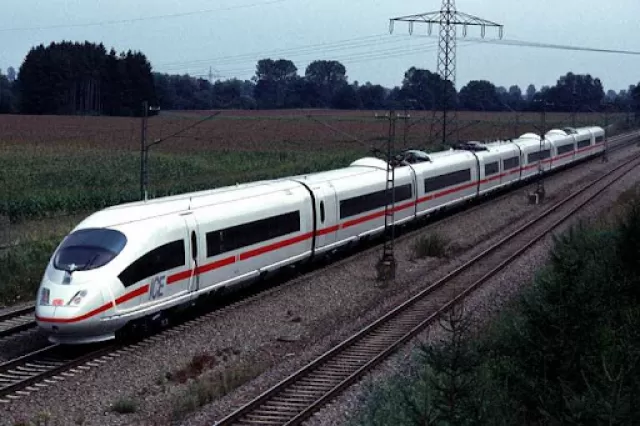
Speed Snapshot
Commercial Speed: 300 to 320 km/h
Test Speed: 368 km/h
Overview
Germany’s Intercity-Express 3, or ICE 3, is the workhorse of the Deutsche Bahn's high-speed fleet. Built for both domestic and international service, this train can run on multiple voltages, making it ideal for cross-border travel.
Technology and Design
Developed in partnership with Siemens and Bombardier, the ICE 3 features distributed traction across multiple cars, allowing for better acceleration and redundancy. The train is constructed with aluminium body shells and active suspension systems.
Cross-Border Capabilities
The ICE 3 operates on routes from Germany to France, the Netherlands, Belgium, and Austria, making it a true pan-European high-speed solution.
Onboard Comfort
With full air conditioning, ergonomic seating, quiet zones, and mobile signal boosters, the ICE 3 ensures a comfortable ride. Business travellers also enjoy dedicated power sockets and conference-style seating.
Why It Stands Out
Beyond its speed, the ICE 3 represents seamless, international mobility with an eco-conscious footprint, positioning Germany as a leader in green high-speed transport.
8. Shinkansen Nozomi (N700/N700S, Japan)
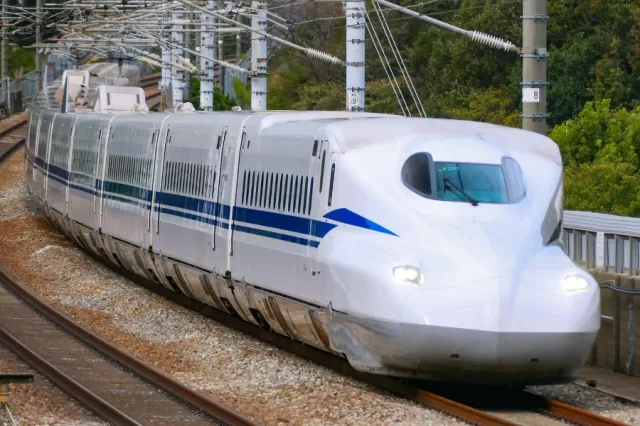
Speed Snapshot
Top Speed: 300 km/h (186 mph)
Operational Line: Tokyo to Osaka and beyond
Overview
The Nozomi is the flagship service on Japan's most iconic high-speed railway, the Tokaido Shinkansen. The train utilises the N700A and upgraded N700S rolling stock, which feature cutting-edge enhancements in safety, energy efficiency, and speed.
Key Technology
The Nozomi incorporates tilting technology that allows it to take curves at higher speeds without compromising passenger comfort. With automatic train control systems and earthquake-detection braking, it's also one of the safest trains in operation.
Passenger Focus
Inside the Nozomi, travellers enjoy plush seating, ample legroom, whisper-quiet operation, and seamless transitions between stations. The Green Car, equivalent to first-class, includes reclining seats, personal charging ports, and concierge-level service.
Why It’s a Classic
Even though the Nozomi is not the fastest by numbers, it is the gold standard in punctuality, service, and operational excellence, with average delays measured in seconds annually.
7. Renfe AVE Class 103 (Spain)
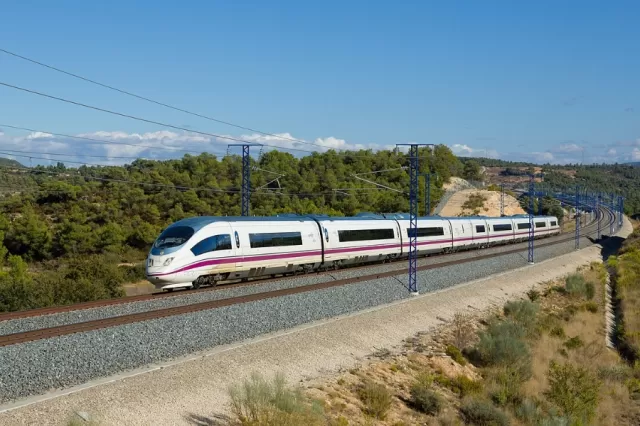
Speed Snapshot
Operational Speed: 310 km/h (193 mph)
Test Speed: 404 km/h
Overview
Spain's AVE Class 103 is a product of Siemens’ Velaro platform and services the busy Madrid–Barcelona–Girona–Figueres route. It is known for blending speed with punctuality in one of Europe’s fastest-growing rail networks.
Technological Prowess
This high-speed electric multiple unit features aluminium construction, regenerative braking, and is capable of operating under both 25 kV and 3 kV electrical systems, enhancing route flexibility.
Passenger Amenities
From panoramic windows and high-speed Wi-Fi to information panels and quiet cars, AVE trains are designed to cater to both comfort and function. Two-class service includes reclining seats, video screens, and mobile connectivity.
Why It’s a Global Model
Renfe’s Class 103 has been the inspiration for other Velaro trains around the world, including those in Russia, Germany, and Turkey. Its influence reaches far beyond Spain’s borders.
6. CR400 Fuxing (China Railway)
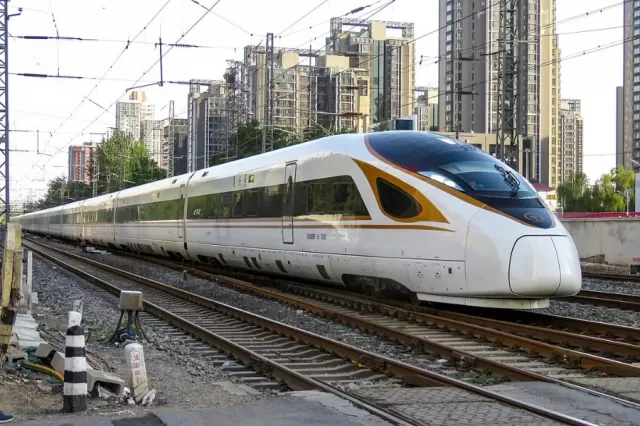
Speed Snapshot
Commercial Speed: 350 km/h (217 mph)
Test Speed: Approx. 420 km/h
Overview
The CR400 Fuxing series is the pride of China’s high-speed rail fleet, operating along the most vital and high-traffic routes such as Beijing–Shanghai and Beijing–Hong Kong. CR400AF and CR400BF models were developed domestically as part of China's drive toward technological independence in railway systems.
Innovation in Action
What sets the CR400 apart is its aerodynamic design, intelligent self-diagnosis systems, and low-resistance construction. With eight-car and sixteen-car configurations, these trains are capable of carrying over 1,200 passengers. Its real-time monitoring system provides automatic alerts for track conditions, braking responsiveness, and internal climate controls.
Passenger Experience
Inside, passengers are treated to spacious seating across business, first, and second-class cabins. Business class offers recliner-style leather seating with privacy walls. Onboard amenities include high-speed Wi-Fi, touchscreen displays, USB ports, noise-reducing interiors, and 5G connectivity in selected lines.
Why It’s a Leader
The CR400 is not just about speed. It is about scale. With hundreds of trains running daily across China’s extensive high-speed rail grid, the Fuxing is unmatched in frequency, reliability, and technological efficiency.
5. TGV InOui / TGV M (France)
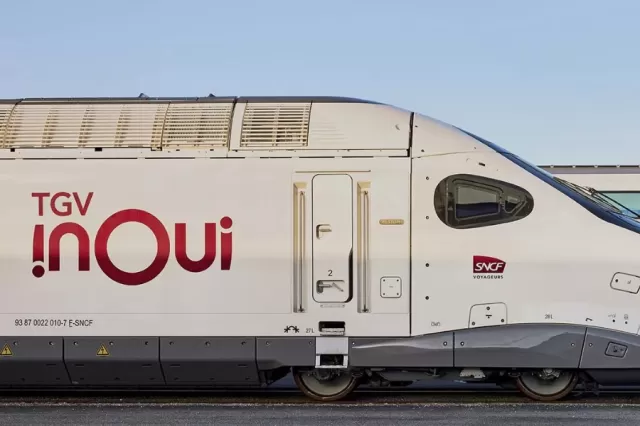
Speed Snapshot
Commercial Speed: 320 km/h (199 mph)
Record Speed: 574.8 km/h (357 mph), the fastest a wheeled train has ever gone
Overview
France’s TGV has long been synonymous with speed and elegance in European rail travel. The TGV M, set to enter service in 2025, is the latest evolution of this iconic high-speed train.
New-Gen Features
Manufactured by Alstom, the TGV M is lighter with a 20 per cent reduction in mass, more energy-efficient with up to 20 per cent less power consumption, and modular, allowing for easy reconfiguration of seating layouts. It also offers improved accessibility features and advanced safety technologies.
Smart Travel
The TGV M introduces predictive maintenance systems that use AI to monitor wear and tear, reducing downtime and increasing reliability. Passengers benefit from upgraded Wi-Fi, digital signage, quieter cabins, and sustainable materials.
Pan-Europe Reach
Operating not just in France but also linking Brussels, London, Geneva, and other cities, the TGV M enhances pan-European travel with luxury and speed.
Why It’s Still Iconic
Despite newer contenders, the TGV remains a benchmark due to its unmatched test record, daily operational efficiency, and ability to adapt with time.
4. CR450BF Fuxing (China Railway CR450)
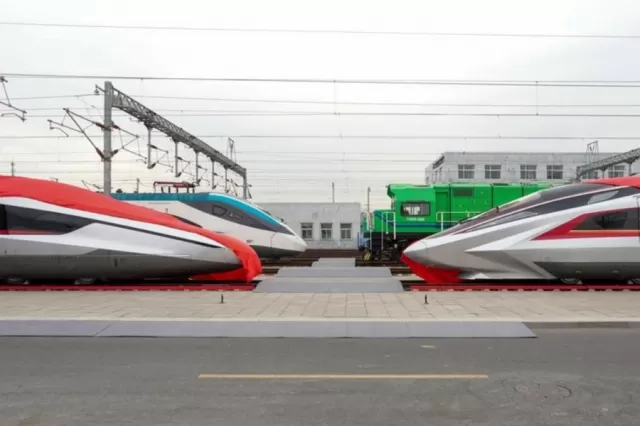
Speed Snapshot
- Operational Target: 400 km/h (249 mph)
- Test Record: 450 km/h (280 mph), with 453 km/h achieved in trials
What’s Next-Level
Born from China’s own Fuxing EMU family, the CR450BF is a leap in rail evolution. Designed entirely domestically under the 14th Five-Year Plan, it cuts weight by over 10%, slashes aerodynamic drag by 22%, and extracts 3% more traction efficiency via permanent-magnet synchronous motors.
Tech & Innovation
- Intelligent real-time diagnostics with over 4,000 sensors
- Aerodynamic body and enclosed bogies
- Braking system allows a full stop from 400 km/h in 6.5 km
Passenger Experience
Four-class seating with leather interiors, business suites, footrests, and dining cars. Smart lighting and real-time display systems complete the experience.
Why It Matters
The CR450 is China’s crown jewel for future networks like Wuhan–Chengdu and Beijing–Shanghai.
3. Shanghai Maglev (Transrapid SMT)

Speed Snapshot
- Commercial Top Speed: 431 km/h (268 mph)
- Test Peak: 501 km/h (311 mph)
Why It’s Unique
Operates on magnetic levitation over a 30.5 km track between Pudong Airport and Shanghai. No wheels, no friction, just speed and silence.
Engineering Insights
Developed by Siemens and ThyssenKrupp with a 25 m column spacing and ultra-smooth alignment. Carries 574 passengers across VIP and standard classes.
Why It’s Rankable
As the fastest operating train globally, the Maglev owns the bragging rights even on a short route.
2. Shanghai Maglev (China)
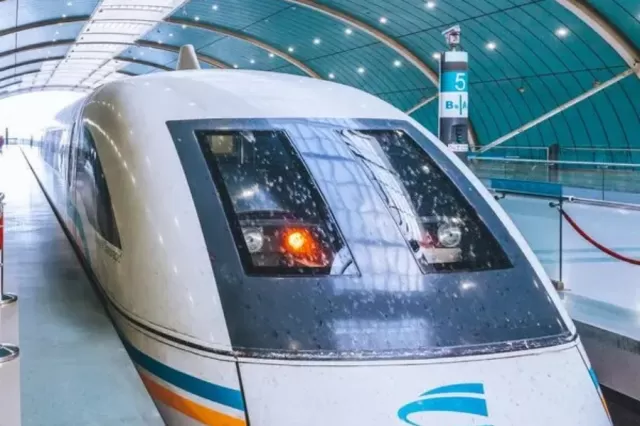
Speed Snapshot
Commercial Speed: 431 km/h (267 mph)
Test Speed: 501 km/h
Overview
The Shanghai Maglev Train, officially known as the Transrapid, is the world’s first commercially operated magnetic levitation line and still one of the fastest. Operational since 2004, this marvel of German-Chinese engineering connects Shanghai Pudong International Airport to Longyang Road Station in just over 7 minutes.
Maglev Technology
Unlike conventional trains, the Shanghai Maglev floats above the track using powerful electromagnets, eliminating friction and allowing for astonishing speeds. This magnetic levitation system is based on Transrapid technology developed by Siemens and ThyssenKrupp.
Passenger Journey
The experience on board is quiet, smooth, and futuristic. With acceleration from 0 to 431 km/h in under 3 minutes, it gives travellers a taste of next-generation transport. The interiors are designed for short high-speed sprints, with comfortable seating and digital speed indicators displaying real-time velocity.
Why It’s Still a Top Contender
Despite being over two decades old, the Shanghai Maglev remains faster than any wheeled train in commercial use. Its enduring performance and technological legacy make it a benchmark in the global high-speed rail sector.
1. L0 Series SCMaglev (Japan)
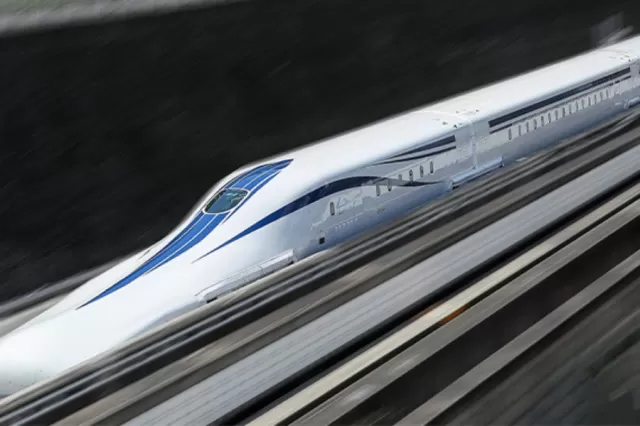
Speed Snapshot
Test Record: 603 km/h (375 mph)
Projected Commercial Speed: ~500 km/h
Overview
Japan’s L0 Series SCMaglev is in a class of its own, having set the world record for the fastest train ever recorded. Developed by the Central Japan Railway Company (JR Central), the train uses superconducting magnetic levitation to float above its track, eliminating friction.
Engineering Feat
Unlike traditional maglevs, the L0 Series employs powerful superconducting magnets that allow the train to hover 10 cm above the track. Its aerodynamic nose stretches 15 meters to minimise air resistance, and each car is constructed using lightweight carbon fibre-reinforced plastic.
Planned Route
The maglev will eventually connect Tokyo and Nagoya in just 40 minutes, cutting the current travel time by over half. The full Tokyo to Osaka line is planned for the 2030s, with commercial testing continuing into 2027.
Inside the Experience
Each car is equipped with adjustable lighting, panoramic windows, ultra-quiet cabins, and a vibration-free ride. The noise level is significantly lower than even Japan's famed bullet trains.
Why It’s Revolutionary
The L0 Series SCMaglev symbolises the future of rail travel. Quiet, ultra-fast, and environmentally friendly, it is one of the most advanced transport projects globally.
10 Fastest Trains in the World 2025
| Rank | Train Name & Region | Commercial Speed | Top Test Speed |
|---|---|---|---|
| 1 | CR450BF Fuxing (China) | 400 km/h | 453 km/h |
| 2 | Shanghai Maglev (China) | 431 km/h | 501 km/h |
| 3 | CR400 Fuxing (China) | 350 km/h | ~420 km/h |
| 4 | L0 Series SCMaglev (Japan) | ~500 km/h | 603 km/h |
| 5 | Nozomi Shinkansen (Japan) | 300 km/h | N/A |
| 6 | TGV InOui / TGV M (France) | 320 km/h | 574.8 km/h |
| 7 | ICE 3 (Germany/Europe) | 300–320 km/h | 368 km/h |
| 8 | Frecciarossa 1000 (Italy) | 300 km/h | 389 km/h |
| 9 | Renfe Class 103 (Spain) | 310 km/h | 404 km/h |
| 10 | Al Boraq (Morocco) | 320 km/h | N/A |
China dominates the leaderboard with CR450 and Maglev engineering marvels. Japan leads futuristic development with maglev and reliability in Shinkansen. Europe continues innovating with TGV, ICE, AVE, and Frecciarossa.
Also Read: Top 10 Fastest trains in the world in 2024




























